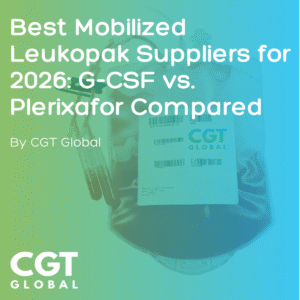The peripheral nervous system (PNS) comprises many complex cell types that work together to transmit electrical signals from the body’s sensory receptors to the central nervous system (CNS) and vice versa. Peripheral nerve cells relay the electrical signals through the long, thin part of the cell called an axon. Schwann cells create nodes of myelin sheath around the axon called nodes of Ranvier. Between each node is a break essential for increasing the speed of which the electrical signal travels between distant parts of the body. Without an intact axon and myelin sheath, peripheral nerve cells cannot activate target muscles or relay sensory information from the limbs back to the brain.
During nerve injury, Schwann cells take on a nerve regeneration role, whereby they break down the myelin and the damaged axon, produce neurotrophic factors that provide cellular guidance of the regenerating axon (neurite), and re-myelinate the neurite restoring function of the nerve. This feature makes them invaluable for aiding in the neural repair of patients suffering from nerve damage due to trauma, however, the number of Schwann cells is limited, making a traumatic injury difficult to repair.
To increase the number of Schwann cells to aid in repair, an in vitro derivation of Schwann cells is proposed by Cai et al., by using bone marrow stromal cells (MSCs), also known as bone marrow mesenchymal stem cells. MSCs are multipotent stem cells capable of differentiating into cells of the mesodermal lineage, which includes osteocytes, adipocytes, and chondrocytes, moreover, these cells can differentiate into cells of the ectodermal (neurocytes) and endodermal lineages (hepatocytes). Additionally, and of equal importance in this study, MSCs are easy to isolate and expand in vitro, providing an abundance of cells to work with.
MSCs Differentiate into Schwann Cells
In this study, bone marrow mononuclear cells were plated in medium that promoted growth and expansion of adherent MSCs expressing well known mesenchymal phenotypic markers CD73, CD90, and CD105. Through directed differentiation, MSCs were differentiated into bone marrow-derived Schwann cells, resulting in a morphology and the expression of molecular phenotypic markers consistent with in vivo Schwann cells. Furthermore, bone marrow-derived Schwann cells supported neurite growth via secretion of neurotrophic factors and formed PNS-type myelin segments along neurites in vitro. To determine in vivo functionality, bone marrow-derived Schwann cells were transplanted into a rat model with sciatic nerve injury and, consequently, guided axonal regrowth and myelination.
“Taken together, this study demonstrates that the human bone marrow harbors neuro-ectodermal progenitors that can be enriched, expanded, and directed to differentiate into functionally mature, fate-committed Schwann cells. The results hold promise for further development into an autologous cell source for implantation as a treatment strategy for nerve injuries or peripheral neuropathies.”
StemExpress is a premier provider of fresh human whole bone marrow and bone marrow primary cells. Additionally, whole bone marrow can be further processed at our on-site laboratory to obtain mesenchymal stem cells. Mesenchymal stem cells are cultured from bone marrow mononuclear cells in supportive medium that promotes adherence and the phenotypic expression of CD73, CD90, and CD105 and the lack of expression of CD14, CD34, and CD45, which are standard characteristics of BMSCs.
Let StemExpress help with your research needs. Please contact one of our sales specialists for inquiries at 530-303-3828 or 888-415-4215.
Follow us on LinkedIn to keep up-to-date on exciting trends, promotions, and new product releases.






